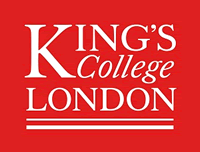Aim of the PhD Project:
- To develop the next generation of cardiac digital twin models which are automatically updated and enhanced using patient intra-procedural imaging and electrophysiological mapping data from the latest novel hybrid electroanatomical mapping-imaging system, facilitated by AI.
- Apply our enhanced digital twin models to optimise target identification in ventricular tachycardia ablation.
Project Description / Background:
Clinical Motivation: Ischemic heart disease (IHD) results in the formation of scar tissue in the heart. Scar-related arrhythmias, such as VT, are responsible for ~6 million sudden cardiac deaths annually. Often, the only effective therapy for patients suffering from incessant VT is highly-invasive catheter ablation. However, procedure times and complication rates are high, whilst success rates are punitively low: typically, >50% of patients will present with VT recurrence within 1-year post-procedure. Patient-specific computational simulation provides an exciting opportunity for integrating the wealth of existing imaging and electrical data for more accurate and beneficial pre-procedure and in-procedure planning, increasing success and reducing risk.
State-of-the-art: Computational cardiology will play a leading role in the future of cardiovascular medicine as it allows integrating comprehensive multi-model imaging data and functional measurements through digital twins: in-silico replicas of a patient’s heart. Currently, such models are only created pre-procedurally, and then used as static entities during invasive procedures. Automated updating from on-going clinical data acquisition is currently lacking, but is important in order to refine and augment their utility, particularly in progressive diseases such as IHD.
Specific Goal: In this project, we will focus on the development of a new class of digital twins which are automatically updated from data recorded during VT ablation. Increasing the fidelity of the digital twin in this manner will allow accurate and up-to-date parameterisation of properties such as slow conduction through diastolic channels and repolarisation properties of scar border-zone tissue, both of which are known to have vital mechanistic roles in VT dynamics. Their accurate representation is essential to improve the accuracy of the in-silico model prediction. In addition to updates through functional measurements, a novel hybrid imaging-mapping system will provide imaging data which may be used to augment local structural formation within the model, potentially also identifying tissue type information (scar, healthy myocardium, border-zone), pivotal for faithful representation of VT circuits within the model.
Process: Initial anatomical models will be generated from pre-procedural imaging (MRI) data, augmented from electrophysiological recordings (ECG) to embellish functional properties such as tissue conductivity and repolarisation properties. Technological workflows for updating these initial models will then be developed, using the in-procedure functional and structural data from the hybrid imaging-mapping system. Creation of initial digital twin models, and techniques for updating, will be driven by AI, utilizing simulation data for forward training, and existing extensive experimental measurements for later tuning. Simulations of VT circuits may then be performed within the models, utilising and further developing novel methods for rapid VT simulation, allowing optimal ablation targets to be identified. Performing such simulations with both initial and updated digital twin models will facilitate a direct comparison which may be used to further optimise and guide the collection of clinical data.
Candidate Background: A suitable candidate ideally has a strong physical science background (applied maths, physics, computer science, engineering) with a particular interest in medicine and physiology, and ideally previous experience in AI.

 Continue with Facebook
Continue with Facebook



